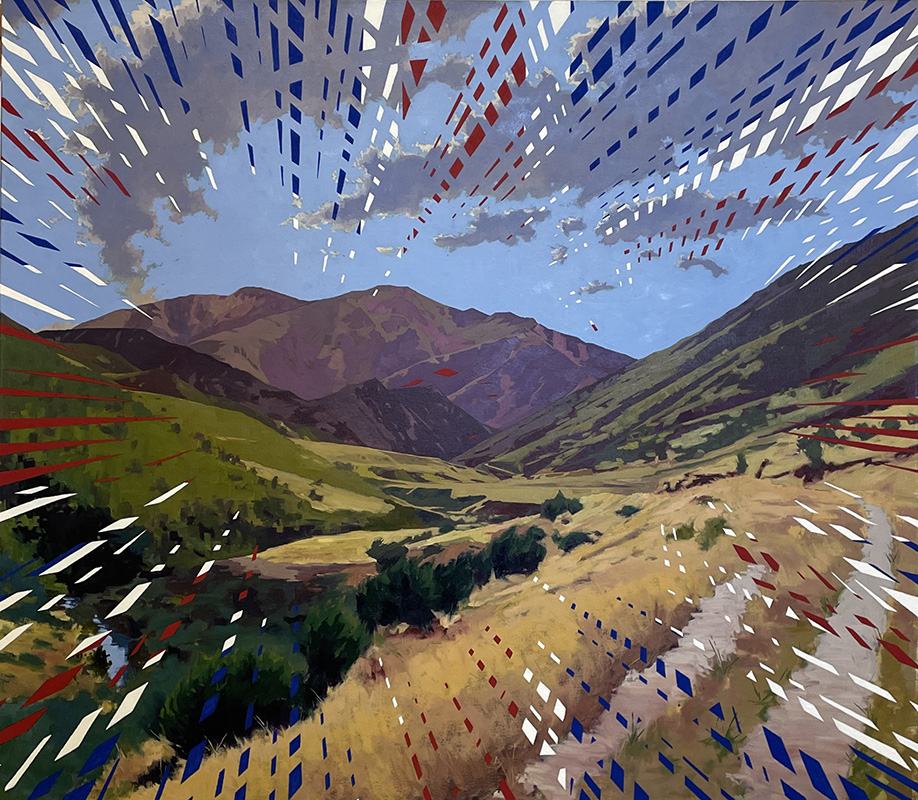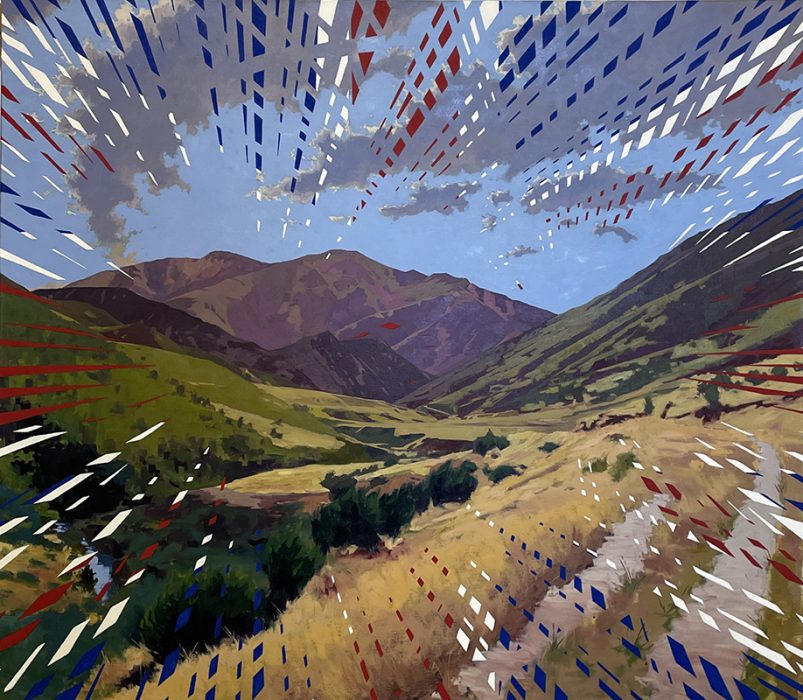April 10, 2025

Written and recorded by Gallery & Curatorial Fellow Cat Teo

In his painting titled Endless Empty Land, Michael MacMahon presents us with the idea of labor and how colonialism has been built upon the notion that land should not belong to people who don’t put physical effort into it. Endless Empty Land is made with oil paint on canvas and depicts the mountainous region that MacMahon found himself hiking through on a recent trip to New Zealand. In the foreground, we can see a vast terrain of rolling hills covered in lush grass and foliage. Behind the hills sit deep, purple mountains, the landscape overlaid with red, white, and blue chopped-up lines, all of which point toward the center of the piece.
Much of MacMahon’s work revolves around colonization and its lasting effects on indigenous people and the land itself. MacMahon feels that his upbringing in Ireland, a postcolonial country, deeply affected his ability to understand and empathize with the treatment of native people. While in New Zealand, he felt deeply connected with the Māori, the indigenous people of the island. The Māori were brutally subjected to the British colonization of their land beginning in the eighteenth century, and the aftermath of this theft still affects them today. Much of the ideology behind the theft of land is backed with the belief that if there is no labor or improvement being put into land, if no one was “using” it, then it was fair game for colonizers to develop and improve.
This idea of labor validating ownership over land is one of the most prominent themes within Michael MacMahon’s work. Many of the landscapes that MacMahon paints are ones that have been colonized due to the perceived lack of effort that the indigenous people were putting into it. One of the key aspects of McMahon’s work is his intentional use of labor through his extensive and technical process of painting. Each landscape can take weeks or months to complete on its own, while the geometric overlays are also an intensive process that often needs twenty to thirty hours to finish. MacMahon finds his rigorous practice to be incredibly meditative. It allows him to fully focus on the technical aspects of his paintings, while much of the meaning comes to him later, after the piece is finished.
Endless Empty Land is one of three paintings within a series set in New Zealand. In all of these pieces, he uses his calling card of overlays to represent the effect that Britain’s colonization has had on the indigenous people of New Zealand. The geometric surface treatment, which is a haphazardly erased version of the British Union Jack flag, is meant to blend in with the landscape. The lines are angled to mimic the exact perspective of the light from the noonday sun. These overlays are also intended to prevent the viewer from getting lost within the background and ignoring the meaning of each piece. While incredibly detailed, MacMahon does not want to grant viewers easy engagement with his paintings, instead, he hopes they will sit and contemplate what is truly being conveyed.
Endless Empty Land asks viewers to truly reckon with the pervasive and brutal colonialist history of our world. While the landscapes that MacMahon creates are strikingly gorgeous, he seeks to draw us into the story behind the beauty. Many people are ignorant of indigenous people’s violent history. Consider the places to which you have travelled. How much of their history do you know? How can we uplift the voices of those who have been cast aside? Let’s try to further our understanding of history and its implications in our world today.